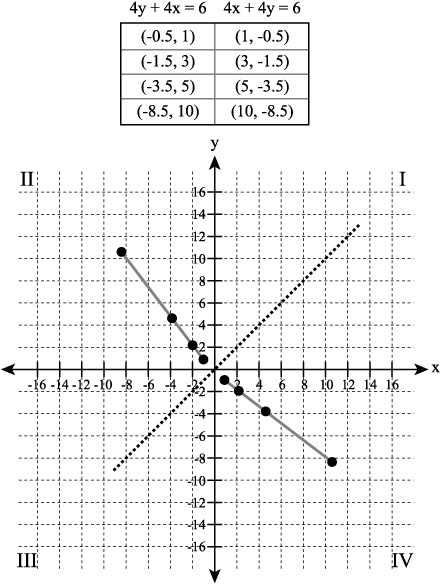Inverses Generally
In previous sections, you have explored how the multiplicative inverse of a slope creates a line that is perpendicular to the line the slope defines. When a function is the inverse of another function, the situation differs. In such a case, as Figure 7.10 illustrates, the values of the x and y coordinates that make up the coordinate pairs of the two lines occur in reversed order. Rather than being perpendicular to each other, the lines are symmetrical.
Figure 7.10. Equations that are the inverse of each other generate inverted ordered pairs.

At the top of Figure 7.10, there is a table in which the coordinate pairs on the left are the reverse of those on the right. Above the table you see equations that represent the inverses of each other. The graph shows the two lines.
When you solve the inverse equations using the set of values, the lines that you generate mirror each other. The line of symmetry can be identified if you use the equation y = x, as the dashed line in Figure 7.10 reveals.
Exercise Set 7.7Plot values for the following equations to determine if the lines that result are symmetrical to the line you get when you plot x = y.
|
